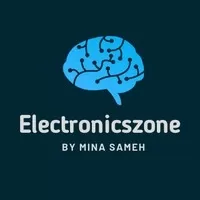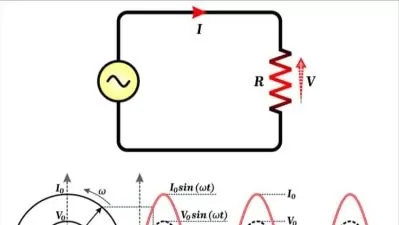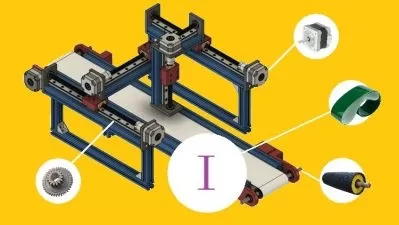Electronics in Biomedical Engineering: Theory & Repair
Mina Sameh
20:43:28
Description
Master Electronics and Biomed Engineering: Troubleshoot, Repair Medical Devices and Develop Solutions for Healtcare
What You'll Learn?
- Analyze and design electronic circuits for biomedical applications.
- Understand the principles and operation of various biomedical instruments.
- Troubleshoot and diagnose issues in electronic systems and medical devices.
- Repair and maintain medical equipment while adhering to safety guidelines.
- Apply digital electronics knowledge to program and control medical devices.
- Process and analyze biomedical signals using appropriate techniques.
- Identify and classify medical devices based on their functionalities and risks.
- Integrate electronics and biomedical concepts to develop innovative solutions.
- Communicate effectively with engineers and healthcare professionals in the field.
- Undertake hands-on projects, applying theoretical knowledge to practical applications.
Who is this for?
What You Need to Know?
More details
DescriptionThe course "Electronics in Biomedical Engineering: Theory & Repair" provides a comprehensive and immersive learning experience for individuals interested in the intersection of electronics and biomedical engineering. The content covers a range of essential topics, starting with the fundamentals of electronics components and circuits, ensuring students grasp the core principles.
Moving forward, the course delves into the applications of electronics in biomedical instrumentation. Students will explore how various medical devices function, enabling accurate measurement and monitoring of vital signs and bioelectric signals. They will gain an understanding of sensors, transducers, and amplifiers used in medical devices and how to optimize their performance.
A key focus of the course is troubleshooting methodologies. Students will learn structured approaches to diagnose and rectify malfunctions in electronic systems and medical devices. Practical skills will be honed in repairing and maintaining medical equipment, adhering to safety protocols to ensure proper functionality and patient well-being.
The course also introduces students to the concept of digital electronics and microcontrollers. They will discover how these components play a vital role in medical device development, allowing for precise control and automation.
Biomedical signal processing is another crucial aspect of the course, where students will learn how to analyze and process bioelectric signals. Understanding signal processing techniques will enable them to extract valuable information from biomedical signals, crucial for medical diagnosis and research.
Furthermore, the course presents an overview of medical device technology and classifications. Students will become familiar with the regulatory framework and safety standards guiding the design and use of medical devices.
In addition to theoretical knowledge, the course emphasizes practical application. Students will engage in hands-on projects, integrating electronics and biomedical engineering principles to create innovative solutions for healthcare challenges.
In summary, "Electronics in Biomedical Engineering: Theory & Repair" equips students with a diverse skill set, empowering them to excel in biomedical electronics. Whether pursuing careers in the medical device industry, healthcare settings, or research, students will be well-prepared to make a positive impact in this rapidly evolving field.
Who this course is for:
- Electronics and Biomedical Engineering Students
- Electronics Technicians
- Innovators and Entrepreneurs
- Electronics Enthusiasts
- Anyone who has a passion for this field or wants to start working in this field of work
- Beginner at electronic engineering want to combin electronics with biomedicine to develop new medical technologies.
The course "Electronics in Biomedical Engineering: Theory & Repair" provides a comprehensive and immersive learning experience for individuals interested in the intersection of electronics and biomedical engineering. The content covers a range of essential topics, starting with the fundamentals of electronics components and circuits, ensuring students grasp the core principles.
Moving forward, the course delves into the applications of electronics in biomedical instrumentation. Students will explore how various medical devices function, enabling accurate measurement and monitoring of vital signs and bioelectric signals. They will gain an understanding of sensors, transducers, and amplifiers used in medical devices and how to optimize their performance.
A key focus of the course is troubleshooting methodologies. Students will learn structured approaches to diagnose and rectify malfunctions in electronic systems and medical devices. Practical skills will be honed in repairing and maintaining medical equipment, adhering to safety protocols to ensure proper functionality and patient well-being.
The course also introduces students to the concept of digital electronics and microcontrollers. They will discover how these components play a vital role in medical device development, allowing for precise control and automation.
Biomedical signal processing is another crucial aspect of the course, where students will learn how to analyze and process bioelectric signals. Understanding signal processing techniques will enable them to extract valuable information from biomedical signals, crucial for medical diagnosis and research.
Furthermore, the course presents an overview of medical device technology and classifications. Students will become familiar with the regulatory framework and safety standards guiding the design and use of medical devices.
In addition to theoretical knowledge, the course emphasizes practical application. Students will engage in hands-on projects, integrating electronics and biomedical engineering principles to create innovative solutions for healthcare challenges.
In summary, "Electronics in Biomedical Engineering: Theory & Repair" equips students with a diverse skill set, empowering them to excel in biomedical electronics. Whether pursuing careers in the medical device industry, healthcare settings, or research, students will be well-prepared to make a positive impact in this rapidly evolving field.
Who this course is for:
- Electronics and Biomedical Engineering Students
- Electronics Technicians
- Innovators and Entrepreneurs
- Electronics Enthusiasts
- Anyone who has a passion for this field or wants to start working in this field of work
- Beginner at electronic engineering want to combin electronics with biomedicine to develop new medical technologies.
User Reviews
Rating
Mina Sameh
Instructor's Courses
Udemy
View courses Udemy- language english
- Training sessions 104
- duration 20:43:28
- Release Date 2024/05/14











